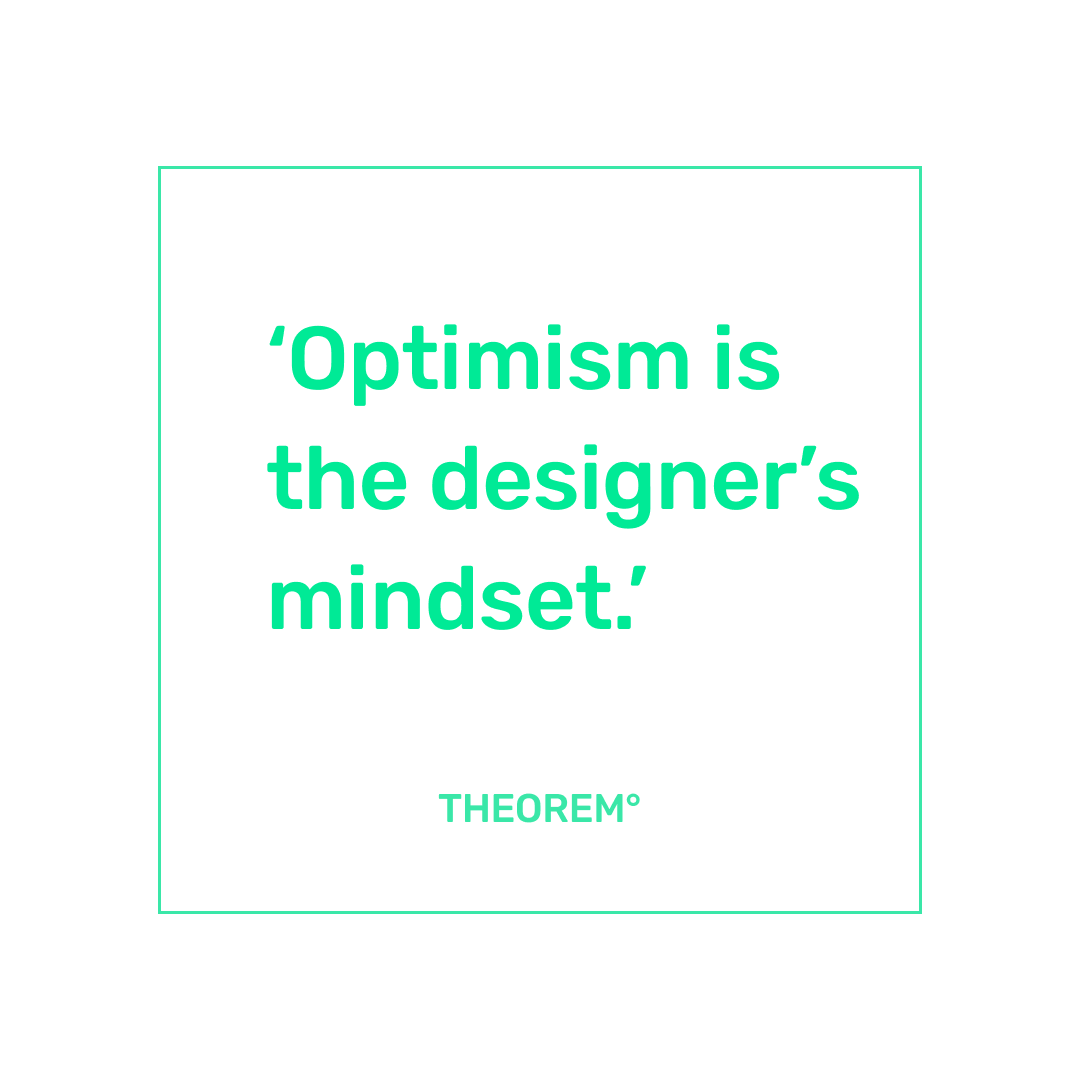It is common to hear, read and discuss the importance of a mindset when designing. This is often connected to Design Thinking, but it has been part of the design experience and practice since its inception. I could argue, all design is inherently optimistic.
Design is often thought of an activity that makes things look pretty, a beautification or decoration of some sort. However, design is a thinking process as much as it is an aesthetic activity and a problem-solving associative response to human needs. The word comes originally from the Latin word ‘designare.’ It connects with words like devising, sketching, drawing, outlining, or figuring out a proposition; a plan that will be executed. This solving-minded thinking activity, of envisioning something that will be, combines creation with thinking, method with form.
Not everything that’s sketched out is a design, it could just be a doodle or art, or a free-flow representation. What makes something a design is the connection it has to the problem it’s solving, and that solution can’t be effective if it doesn’t understand the human it will be designed for.
People are at the core of any design, because design is set to improve or solve human-problems. When we are tasked as designers to think and solve a user-problem, we immediately need to set our sights to the user, the human that will use this service or product. That very moment we are thinking of solving a human-problem we switch our mindset to an open one, an awake and sunny attitude to comprehending the needs of this fellow human who will use the design we are envisioning. This optimistic attitude shows a profound belief that any problem can be solved through a series of explorations which eventually will lead us to an effective solution. If this eventually fails or doesn’t, it’s actually irrelevant because all design is a work in progress, needs optimisation. What’s important is understanding that not a single design will be executed unless there’s an optimistic mindset that dares to believe in a solution, that dares to explore, innovate and rethink what has been done before and dares to listen and tackle problems as the design is used and understood.
Optimism is the one attitude that can’t change when designing, and it is the attitude that enables it to be effective, to embrace the problem, often the blocker can transform into an option, and eventually evolve, and be optimised. Optimism sees problems as challenges, blockers as opportunities, and finds a way to solve and create relevance and value.
“The impediment to action advances action. What stands in the way becomes the way.” ~ Marcus Aurelius


